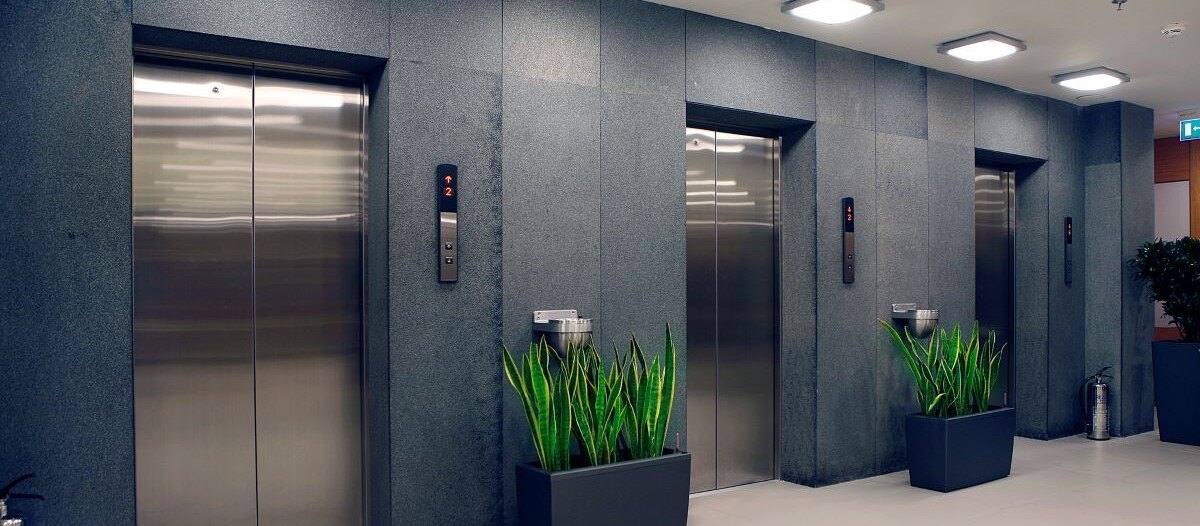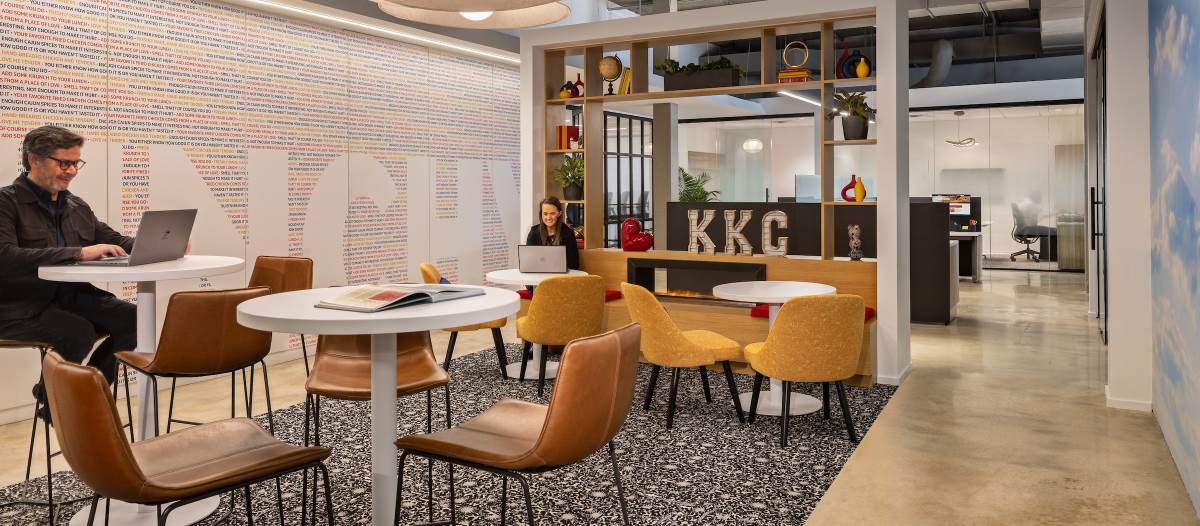Destination Dispatch
The key to smarter elevator traffic

Over the past two years, how buildings are being used and how people move through them have drastically changed. Waves of shifting patterns between social distancing, office closures, remote working and isolation have caused headaches for facility managers worldwide.
While the COVID-19 pandemic has created its own challenges, the need for flexible and efficient movement of people through buildings is, of course, not just tied to the current health and safety landscape. For decades, high-rise buildings have become increasingly taller, with more floors and tenants to serve. This has led to traditional elevator systems becoming less efficient in distributing passengers to their destinations.
Traditional elevator systems come with limitations – people queuing up outside the elevator doors, sharing a cab with strangers, uncomfortable silence, patiently waiting for their floor to ding – not to mention the delay and frustration that comes with an elevator being out of service. The classic elevator setup does not always meet the needs of the modern property and its busy tenants. This is what led to the development of the intelligent elevator distribution system known as Destination Dispatch.
Sometimes referred to as Destination Control, Destination Dispatch was designed to improve life for building owners, facility managers, tenants and visitors, and the system’s benefits touch every element of everyday elevator travel. At its core, it is a traffic control system that directs each elevator to the location where it is put to its most efficient use at any given moment. The technology is typically used in commercial, multi-elevator buildings. It offers an opportunity to not only adapt to changing health and safety guidelines, but also allows for the flexibility needed to efficiently handle peaks and valleys of traffic throughout the working day.
How Does Destination dispatch work?
-
Smart Routing
A Destination Dispatch system analyzes the elevators’ traffic data and learns from it, using the information to improve traffic flows. This reduces the estimated travel time between 30 and 50 percent compared with traditional systems.
-
Passenger Grouping
The system groups elevator passengers based on their destination floor. This means that the individual can enter an elevator without having to press any buttons inside the cab, knowing that they will be moved quickly to their destination floor without waiting for people to get on and off.
-
Buttonless Calling
A Destination Dispatch system uses input devices such as keypads, touch screens or contactless proximity cards. All floor selections are made before the passenger is guided to the appropriate elevator, which travels directly to the correct destination. Per code, for ADA compliance, the system can include a hardware button to open the door and allow voice commands.
Benefits of Destination Dispatch
-
Energy cost savings
The system enables significant energy savings due to more efficient distribution of passengers, a reduced number of floor-to-floor runs, and fewer energy-demanding stops and starts.
-
Increased capacity
Buildings can increase the handling capacity of their elevators without having to increase the number of elevators, replace the existing cars or change their speed.
-
Managed access and safety
With a destination system, tenants can expand their space anywhere in the building – not necessarily on adjacent floors. The system can route people and manage their access using key cards or codes, often integrating with security systems like gates or turnstiles.
-
Communicate smarter
With the use of central communications screens, the building can share enhanced communications with passengers about building management updates, safety issues, or staggered arrival and departure times.
-
Improved tenant satisfaction
Fewer stops and shorter travel times lead to reduced stress during heavy traffic periods. This promotes tenant satisfaction and can help to enhance the reputation of the building – increasing the market value of the property and rental space.
-
Reduced construction costs
For new construction, a destination system allows for more efficiently configured elevator banks, with potentially smaller and fewer elevators and lobbies. With a smaller building core, it is possible to reduce construction costs while increasing rentable space and tenant capacity.
-
Improved COVID-19 safety
The system naturally leads to reduced crowding in elevator cars, and passengers do not need to shuffle around to access the button panel inside the elevator. This provides enhanced safety and confidence for passengers who want to limit proximity to others.
-
A customized passenger experience
For passengers with impaired mobility, a destination system offers better accessibility as it can allow them to move directly to a designated elevator. The system can also be set up with customized features such as a VIP or pet service, using individual passenger preferences programmed into their keycards.
Is Destination Dispatch right for you?
There are many factors to take into consideration for any building looking to improve elevator efficiency and capacity. It is important to establish that a building would benefit from the features the system offers. Destination Dispatch is well suited to mid- and high-rise office towers and buildings that attract consistently heavy traffic to specific floors. Examples include medical offices, fitness centers, renters of temporary office and conference space, restaurants, and roof-top bars or observation decks.
However, in some situations, Destination Dispatch is not ideal. A low-rise, single-tenant structure would not experience the efficiency benefits of the system. A high-rise property with traffic patterns of a hotel or public building is often not a great candidate either, as these types of buildings tend to serve a heavy volume of transient, infrequent visitors who are unfamiliar with the building and would likely be confused by a non-traditional elevator system.
The different destination systems
Not all elevator destination solutions are made equal. A full Destination Dispatch deployment is a large undertaking that requires significant investment. There are alternative elevator intelligence upgrades to consider.
ETA (Estimated Time of Arrival)
ETA is a control system that analyzes various factors to determine which elevator is best to answer the hall call, in the fastest possible time. These factors include elevator position, speed and direction, the location of the call and destination.
Lobby Boost
A Lobby Boost system uses destination input devices at the lobby level to help provide optimized travel from the lobby during periods of high traffic while retaining traditional up and down hall calls at the other floors. This allows lobby passengers to select their floor and be sorted in order of destination. Although this could mean that passengers end up waiting slightly longer in the lobby, they will spend less time in the elevator and reach their destination faster. This solution is ideally suited to peak traffic times such as morning arrivals, afternoon departures, lunchtimes and early closing times before holidays.
Full Destination
The Full Destination Dispatch is the most common configuration providing the maximum benefits over time. For this solution, input devices are placed on all floors serviced by the elevator, allowing the system to group all riders traveling to the same floor.
Hybrid
In a hybrid destination model, input devices are located only on certain floors, with up and down call buttons on other floors and inside the elevator.
Are tenants ready for a destination project?
For most elevator passengers, the benefits of an upgrade to Destination Dispatch will be immediately recognizable: far less crowding, more orderly traffic and quicker arrivals to their destinations. However, even though the system is carefully designed to be user-intuitive, some passengers may initially find it confusing. It is important to communicate the changes and any disruption to tenants – before, during and after installation. FMs will need to place explanatory signage in the lobby, and post instructions at landings and in communal areas. If FM has an email database or newsletter list for tenants, that could also be a great channel for sharing instructional videos or guide documents.
Every conversion to a destination system is a custom project and requires a thorough, detailed assessment to establish the suitability of building and elevator equipment. However, every opportunity to upgrade means countless benefits waiting to be captured – for both the building and tenants.

Åsa Christina Magnusson, senior manager marketing and communications, American Elevator Group, is a skilled marketing professional with a background in serving high technology and manufacturing industries with strategic marketing insight and content.
Read more on Workplace , Occupancy & Human Factors and Operations & Maintenance
Explore All FMJ Topics









